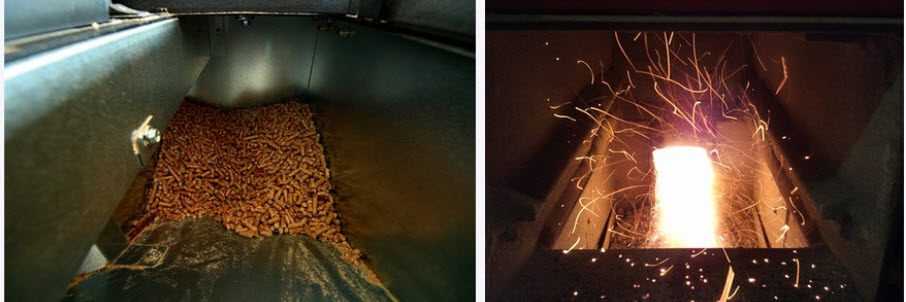Introduction to Biofuels from Waste Materials
In recent years, there has been a significant upswing in attention towards the production of biofuels derived from waste materials. This burgeoning interest stems from the dual advantages offered by biofuels: they present a renewable and sustainable energy resource while simultaneously addressing the escalating challenge of waste management. Through the conversion process, waste materials are transformed into viable fuels, aiding in the reduction of environmental pollution and contributing positively to the enhancement of energy security.
Understanding Biofuels
Biofuels are classified as renewable energy sources that are procured from biological materials. In stark contrast to traditional fossil fuels, which not only have a finite supply but also significantly exacerbate carbon emissions, biofuels provide a cleaner and more sustainable alternative. The primary sources of biofuels consist of plant materials, animal waste, and various forms of organic residues. Each of these sources undergoes specific conversion processes to produce energy, highlighting the dynamic nature of energy resources derived from biological origins.
Types of Waste Materials for Biofuel Production
The advent of biofuels from waste materials leverages a broad spectrum of waste streams, each possessing unique characteristics conducive to energy conversion. A detailed examination of these materials encapsulates:
Agricultural Residues: These residues emanate from agricultural activities and include byproducts like straw, husks, and leaves. Once considered waste, these materials now serve as valuable inputs for biofuel generation, showcasing a shift in perspective regarding agricultural waste management.
Municipal Solid Waste (MSW): Household waste, particularly its organic components, has found utility in biofuel production. This approach not only aids in reducing the volume of waste destined for landfills but also capitalizes on the energy potential inherent in everyday refuse.
Industrial Waste: Byproducts from industrial processes, particularly those from the food processing sector, can be effectively converted into bio-energy. This transformation aligns with the principles of a circular economy, where waste is reimagined as a resource rather than a disposal burden.
Sewage and Animal Manure: Rich in organic content, sewage, and animal manure represent prime candidates for biofuel production. Their conversion into energy not only reduces environmental contaminants but also presents a sustainable alternative to conventional waste treatment methods.
Conversion Technologies
The transformation of waste materials into biofuels is facilitated by an array of conversion technologies, each suited to specific types of materials and desired fuel outputs. Two primary methods define this conversion landscape:
Thermochemical Conversion
This method encompasses a suite of processes, including combustion, gasification, and pyrolysis, each relying on high temperatures to deconstruct waste materials into usable forms of biofuels such as bio-oil, syngas, and biochar. These processes underscore the capacity to harness heat as a transformative force in energy production from waste, allowing for the extraction of high-energy outputs from readily available materials. Learn more about thermochemical conversion.
Biochemical Conversion
Biochemical conversion distinguishes itself through the employment of biological processes to convert biomass into various biofuels. Technologies like anaerobic digestion and fermentation stand at the forefront of this method, utilizing microorganisms to convert organic matter into valuable energy carriers like biogas and ethanol. This method not only emphasizes the intricate capabilities of biological systems in energy production but also highlights the importance of biotechnology in modern energy solutions. Find more information on biochemical processes.
Benefits of Using Waste Materials for Biofuels
Opting for biofuel production from waste materials offers an array of benefits, each contributing to broader environmental, economic, and energy objectives:
Environmental Impact: One of the most compelling advantages of waste-to-energy processes is their contribution to reducing landfill use and mitigating greenhouse gas emissions. By diverting waste from landfills, these processes contribute to decreased methane emissions, which are a significant contributor to global warming. This not only addresses waste accumulation but also aligns with objectives to curb climate change.
Economic Value: The economic viability of biofuels is enhanced by utilizing low-cost waste materials as feedstock. This not only reduces production costs but also supports local economies by creating employment opportunities in sectors such as waste collection, processing, and biofuel production. The economic ripple effect extends from rural areas, where many waste materials originate, to urban centers, where processing and utilization occur.
Energy Security: Utilizing waste materials for local energy production diminishes reliance on imported fossil fuels, contributing to enhanced energy security and independence. By developing local energy resources, nations can better insulate themselves from fluctuations in global energy markets and geopolitical tensions, thereby safeguarding their energy futures.
Challenges and Future Directions
Despite the promising potential of biofuels from waste materials, several challenges persist that need to be addressed to fully optimize their use. Key areas of concern include the need to improve existing technologies to increase conversion efficiency and reduce associated costs. Additionally, the logistics of waste collection and processing present unique challenges that must be overcome to realize the scalability of this approach.
Investment in research and development is crucial to overcoming these barriers. By advancing technologies and streamlining processes, the biofuel industry can enhance its efficiency and cost-effectiveness, making it a more attractive alternative to conventional fuels.
The establishment of supportive policy frameworks and incentives is equally important. Such measures can significantly expedite the adoption of waste-to-biofuel technologies by creating a favorable environment for innovation and adoption. Partnerships involving government entities, industries, and research institutions are poised to play a critical role in fostering the growth and advancement of this promising domain.

